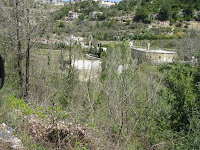 By Dawn Eden
By Dawn EdenAs the first-ever U.S. congregation of Maronite religious women prepared to celebrate its first anniversary on June 1, Bishop Gregory Mansour said he “could not be more pleased.”
Sister Marla Marie has carried out her work with the Maronite Servants “with dignity and integrity,” Bishop Gregory said. “She moves carefully and intently on Christ’s mission.”
That mission, as embodied in the Maronite Servants’ charism, is, in the words of Sister Marla Marie, “to pray for our people and to guide them, as a good spiritual mother, to a deeper relationship with Christ and his Church. “
“In my mission visits and pastoral service, I have been able to give talks, retreats, and person-to-person spiritual guidance,” she said. “My parish visits have put me in touch with many great people who strive earnestly to live out their faith.”
Those visits took Sister Marla Marie to over 20 Maronite parishes during the past year throughout the United States as well as Lebanon and Australia. Thousands of faithful were touched by this witness, and two women responded to join her in the new congregation. They are Therese Touma of Sydney, Australia, who has been accepted, and Tresa Van Heusen of Atlanta, who is in the application process. They are slated to begin the novitiate next February 2, on the Feast of the Presentation.
The applicants are “two excellent young women,” Bishop Gregory said. Vocations for the Maronite Servants “have not come easy,” he added, “but whatever is beautiful is worth the effort.”
The bishop praised Sister Marla Marie’s “personal attachment to the Maronite Church. She feels one with this church and her mission.”
“For me, for Monsignor Michael Thomas, as well for all our priests she is easy to work with; she is already our sister in Christ,” he added. “This gives me and all our priests great personal joy, encouragement and confidence in the future.”
For her part, Sister Marla Marie is grateful to Bishop Gregory for supporting and inspiring her in her mission, and thankful for the opportunities she has had to meet and talk with many Maronite clergy.
“Our parishes are blessed to have these dedicated Abounas,” she said. “I look forward to the day when we can send out many sisters to serve alongside our priests, offering our spiritual motherhood to nurture our people.”















